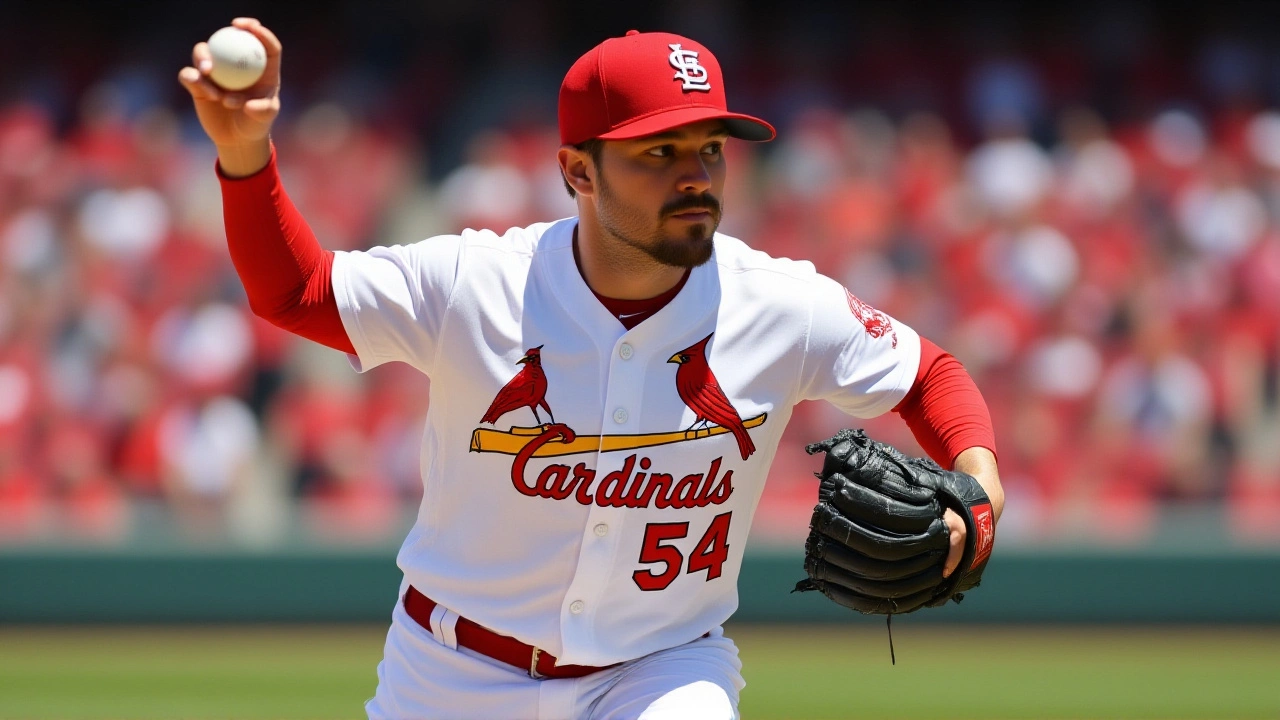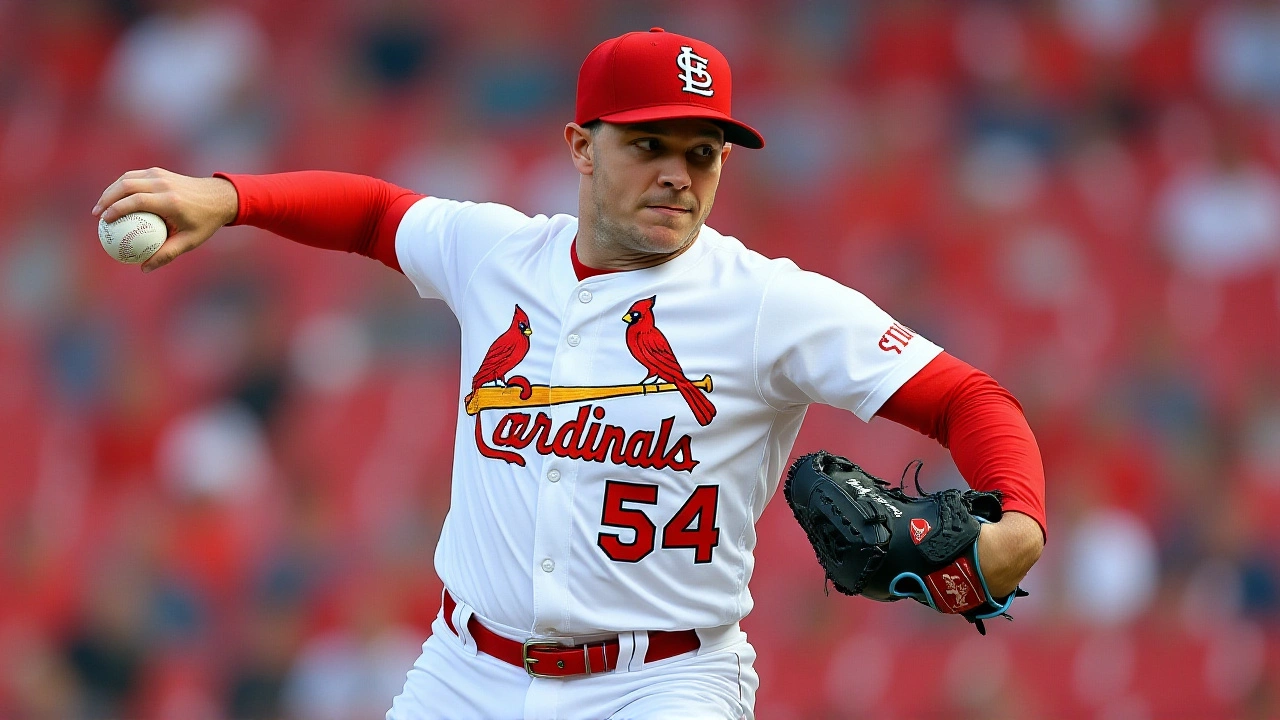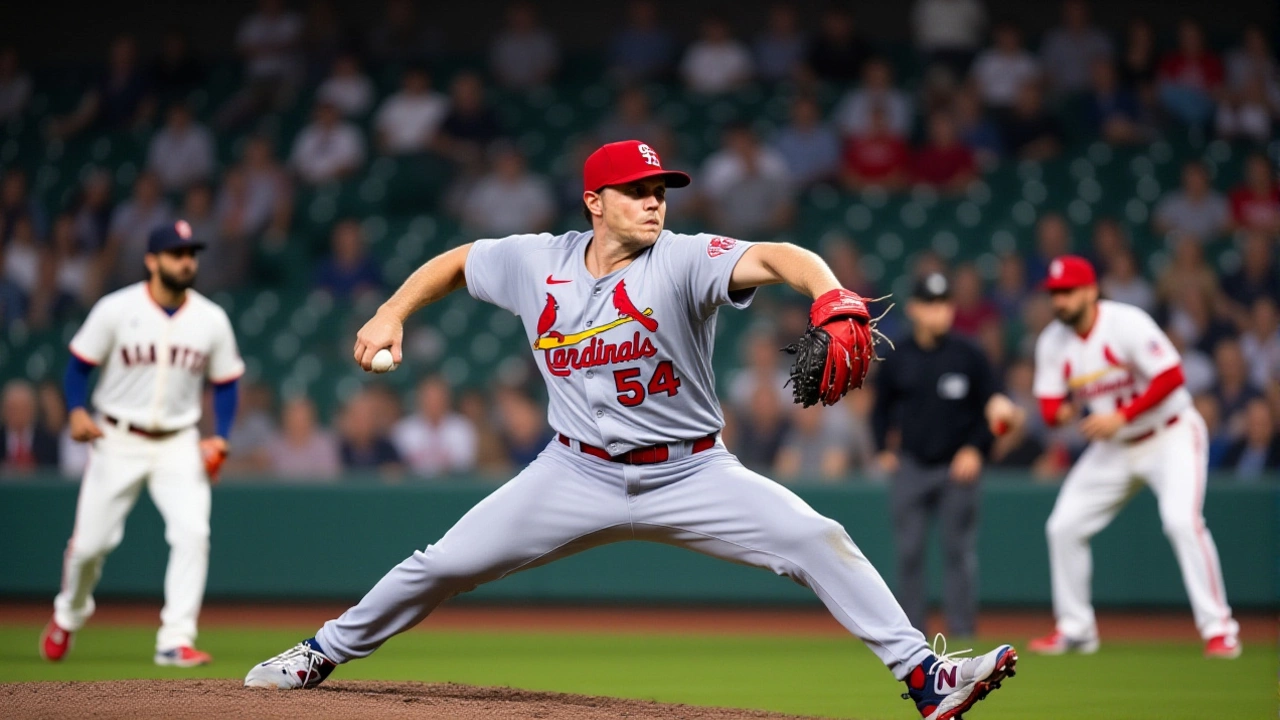The Boston Red Sox pulled off a quiet but seismic move on , acquiring veteran right-hander Sonny Gray from the St. Louis Cardinals in exchange for pitching prospect Brandon Clarke, right-hander Richard Fitts, and cash. The deal, confirmed by ESPN at 4:45 p.m. UTC, wasn’t just about adding a strikeout machine—it was a calculated gamble on durability, experience, and salary flexibility. And the twist? The Cardinals are paying $20 million of Gray’s new contract to make it happen.
Why Gray? The Numbers Don’t Lie
At 36, Gray isn’t the flashy young arm teams chase in free agency. But he’s one of just five pitchers in MLB history to record 200+ strikeouts in back-to-back seasons (2024 and 2025). Last year, he threw 32 starts, logged 187 innings, and struck out 201 batters with a 4.28 ERA—all while averaging nearly 98 mph on his fastball and maintaining elite command. His career 3.58 ERA over 13 seasons? That’s Hall of Fame-caliber consistency. He’s not just a pitcher; he’s a machine that avoids hard contact. As Craig Breslow, the Red Sox’s Chief Baseball Officer, put it during his media session at Fenway Park: "He excels at staying off barrels. You don’t find that often in guys who eat 200 innings." That’s the kind of phrase scouts whisper about but rarely say out loud.The Contract That Made It Possible
Here’s where it gets interesting. Gray’s original deal with the Cardinals—a three-year, $75 million contract signed in 2023—called for $35 million in 2026 and a $30 million team option with a $5 million buyout for 2027. The new agreement? A one-year, $31 million guarantee for 2026, with a mutual option for 2027 worth $30 million and a $10 million buyout. That means Gray is locked in for $41 million total if Boston declines the option, but the Cardinals are absorbing $20 million of that cost. Why? Because St. Louis Cardinals President of Baseball Operations Chaim Bloom is clearly resetting the roster. With Nolan Arenado’s massive contract looming, shedding salary now opens doors. "They’re not just trading away a pitcher," said a front-office source familiar with the talks. "They’re clearing space—for someone else. And Gray was the perfect asset to move."The Prospects: Clarke, Fitts, and the Cost of Doing Business
The Red Sox gave up two arms. Brandon Clarke, 22, was Boston’s No. 5 prospect per MLB Pipeline—a lefty with a 100 mph fastball and a slider that looks like a breaking ball on film. He posted a 4.03 ERA in 38 innings across Single-A and High-A in 2025, striking out 60. He’s raw, but he’s got the tools. Then there’s Richard Fitts, 25, a right-hander who showed promise in 15 MLB appearances over two seasons with a 3.97 ERA. But durability? Not his strong suit. A strained pec in April, then arm neuritis in August—his 2025 season ended prematurely. The Cardinals see upside in Fitts’ stuff but likely view him as a bullpen project. And the cash? That’s the real win for Boston. They didn’t give up a top-10 prospect. They gave up two arms with question marks and got a frontline starter for the next 12 months.
The Rotation: Crochet, Gray, and the New Face of Boston’s Staff
With Garrett Crochet (AL Cy Young finalist in 2025) leading the way, Gray slots in as the clear No. 2. Behind them, Brayan Bello, Connelly Early, and Payton Tolle round out a rotation that suddenly looks formidable. Gray’s ability to pitch deep into games—187 innings last year, 192 in 2024—means the bullpen doesn’t have to carry the load. That’s a luxury the Red Sox haven’t had since Chris Sale was healthy. And with Gray’s contract expiring after 2026, Boston gets a high-upside, low-risk rental. No long-term commitment. Just a year of elite performance.What This Means for St. Louis
The Cardinals aren’t rebuilding—they’re repositioning. Bloom, in his first year at the helm, made his first major move by trading a 36-year-old with a big contract. That’s bold. And the fact they’re covering $20 million? It signals they’re serious about reshaping the roster. Rumors are swirling about Nolan Arenado, whose $30 million salary and no-trade clause have been a logjam. If the Cardinals can move Gray and absorb cost, they might be able to do the same with Arenado. The front office’s willingness to pay cash to get rid of salary? That’s a new language in St. Louis.
What’s Next?
Gray will be introduced at Fenway on Wednesday, November 26, 2025, at 10:30 a.m. EST. The Red Sox’s official press release came out at 9 a.m. from their headquarters at 4 Yawkey Way. The Cardinals, meanwhile, are expected to make another move before the winter meetings end. As for Gray? He waived his full no-trade clause to come to Boston—a sign he believes in this team’s chances. And why not? With Crochet, a solid bullpen, and a lineup that’s quietly improving, the Red Sox aren’t just playing for next year. They’re playing for October.Frequently Asked Questions
Why did Sonny Gray waive his no-trade clause to join the Red Sox?
Gray, a three-time All-Star and 2023 Cy Young runner-up, reportedly wanted to join a contender with a realistic shot at the playoffs. The Red Sox, with Garrett Crochet leading the rotation and a deep lineup, offered him a chance to compete in 2026. His willingness to waive the clause also suggests he’s open to a short-term deal—especially with the Cardinals willing to cover $20 million of his salary, making the move financially advantageous.
How does this trade impact the Red Sox’s chances in 2026?
Boston’s rotation went from speculative to formidable. With Crochet and Gray as the top two, the team now has two pitchers who combined for 406 strikeouts in 2025. Gray’s ability to pitch deep into games reduces bullpen strain, and his experience in high-leverage moments adds leadership. Combined with a lineup that improved in late 2025, the Red Sox are now legitimate AL East contenders, not just a hopeful team.
What did the Cardinals get in return, and is it enough?
They received Brandon Clarke, a lefty with elite velocity but limited pro experience, and Richard Fitts, a right-hander with injury concerns. Neither is a star, but Clarke was Boston’s No. 5 prospect—so they got a high-upside arm. More importantly, they cleared $20 million in salary and kept their payroll flexible for a potential Nolan Arenado trade. For a team retooling under Chaim Bloom, this is a win on paper.
Is Sonny Gray’s contract a risk for the Red Sox?
Minimal. Gray’s deal is guaranteed for only 2026 ($31 million), with a mutual option for 2027. The Cardinals paid $20 million toward it, reducing Boston’s exposure. Even if Gray declines in 2027, the buyout is $10 million—far less than his previous salary. And if he performs? He’s a key piece in a playoff push. This is a low-risk, high-reward move—exactly what smart teams do in the offseason.
Could this lead to more trades for the Cardinals?
Absolutely. The Cardinals’ willingness to absorb $20 million in salary signals a new approach under Chaim Bloom. With Nolan Arenado’s $30 million salary and no-trade clause looming, this trade sets a precedent: they’re now open to moving expensive veterans if the return includes prospects and cost relief. Expect more deals before spring training, especially if they can offload Arenado without eating the full salary.
How does this affect the AL East race?
The Yankees and Orioles are still favorites, but Boston just made a statement. Adding a proven, durable ace like Gray transforms them from a team hoping to compete into one that expects to contend. With their offense showing signs of life and a bullpen that improved in late 2025, the Red Sox are now a legitimate threat in the division. The AL East just got a lot more interesting.
